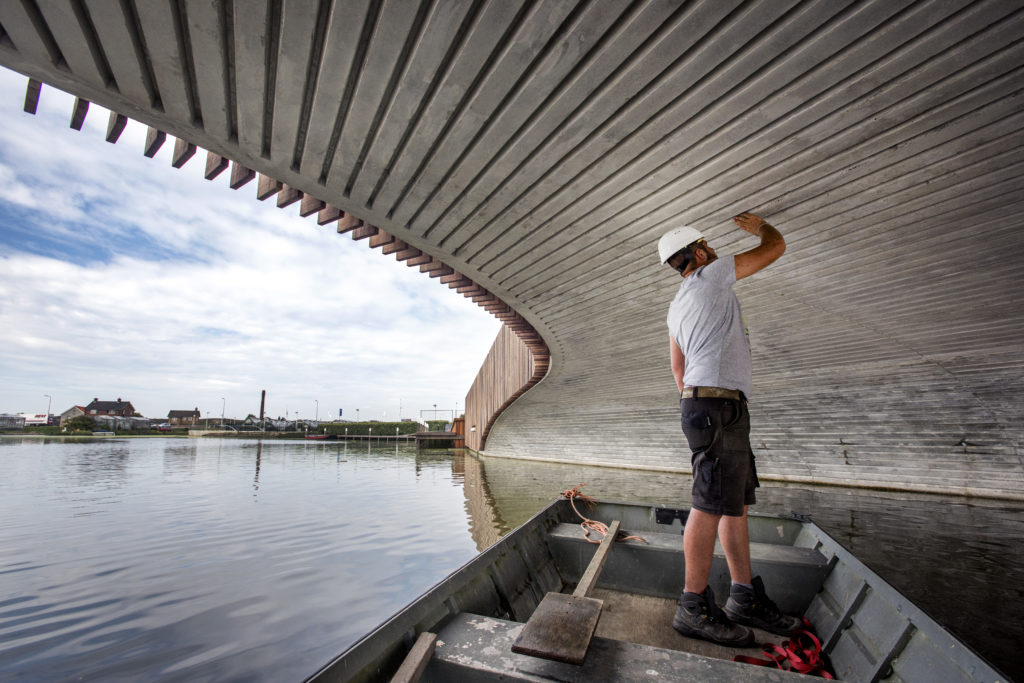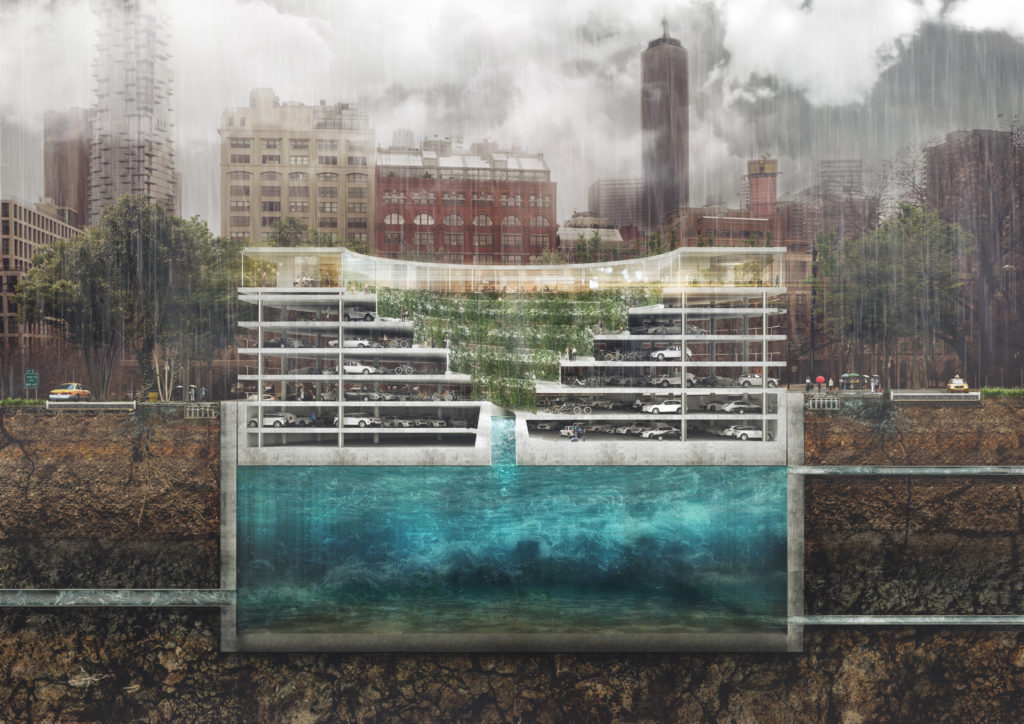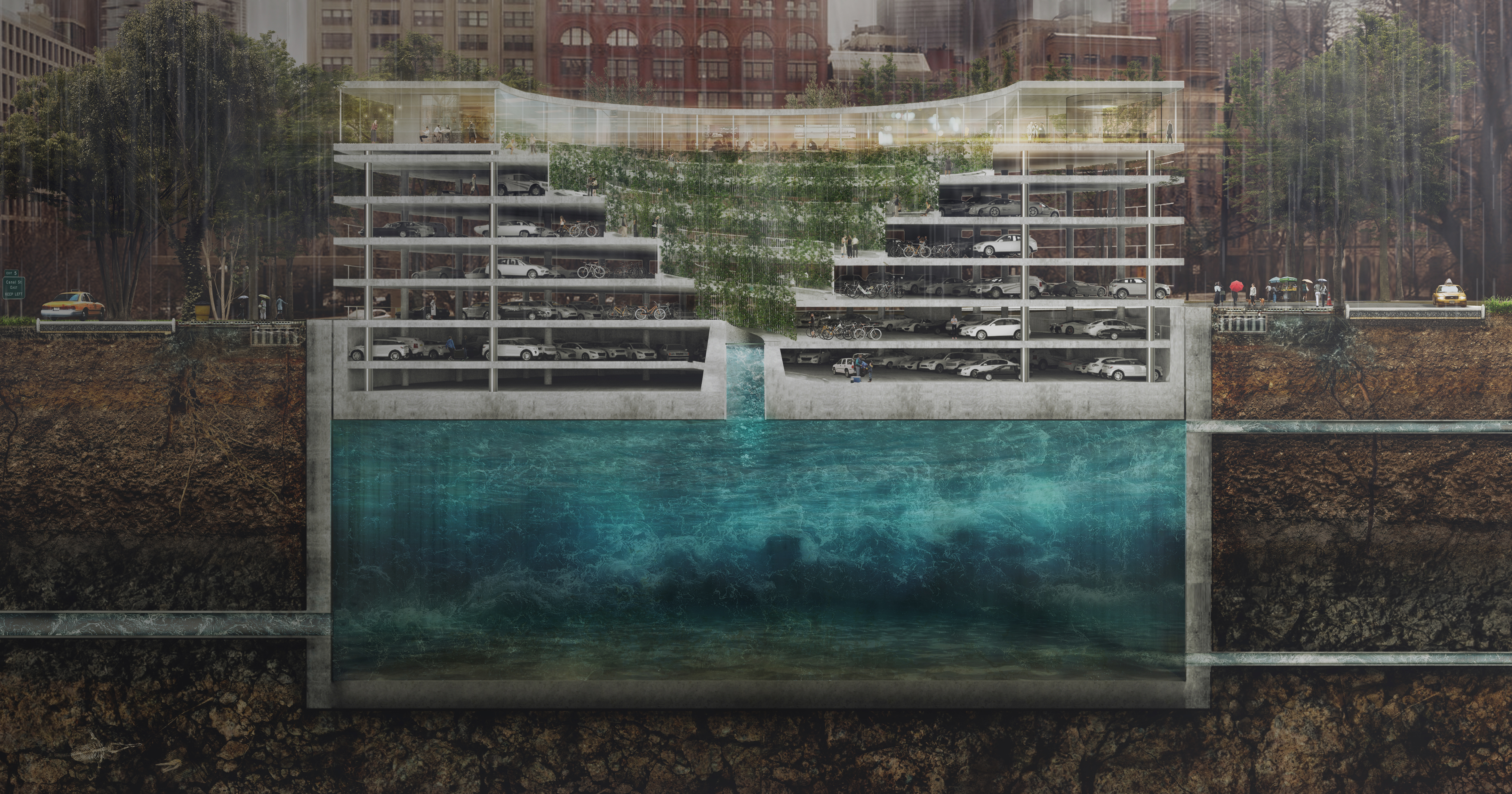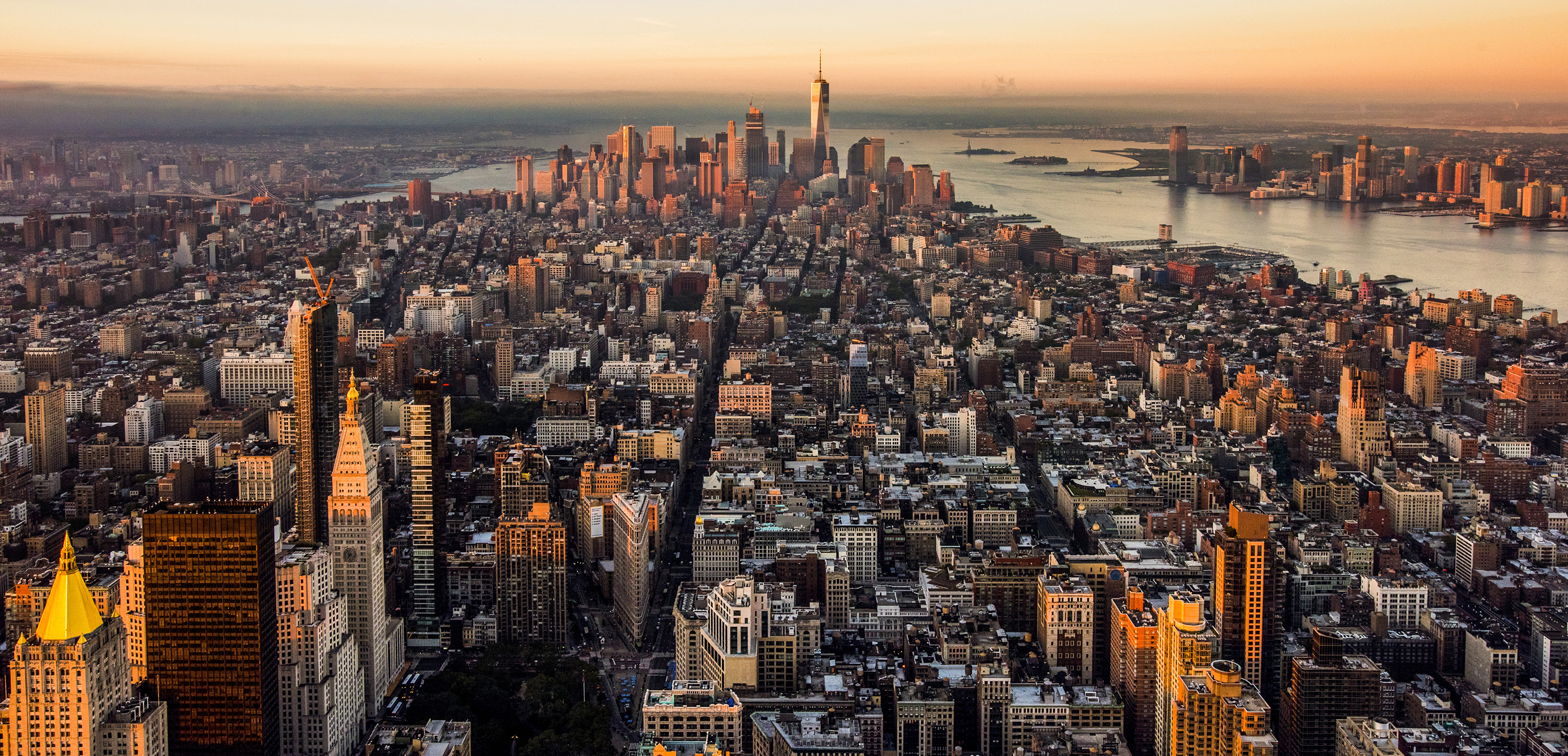Written by Scott Burnham.
The history of the built environment could be broadly defined as man’s battle against nature. Building and paving over wetlands, barricading cities with seawalls, slicing through migration routes with motorways — a great deal of cement, steel and asphalt has been called into service in the long war against the natural world.
Despite centuries-old efforts, sea level rise, increasingly frequent and devastating storms, floods, droughts and a changing climate shows that efforts to conquer and isolate the city from nature have been futile at best, and fatalistic acts of ego at worst.
NatureStructure — a new exhibition opening May 17 at Boston’s BSA Space — reverses the built environment’s battle against nature. Instead of combating natural forces, NatureStructure represents a new generation of innovative infrastructure that uses the powers and processes of nature as components, providing a framework for a sustainable and coexistent future.
Animosity towards nature has casually seeped into the lexicon of development over time. Cities and waterfront developments increase their footprint through “reclaimed” land (begging the question: When was it taken away in order to be reclaimed?). When the power of nature is acknowledged, companies seek to “harness” natural forces or “capture” its benefits: all terms of dominion, containment, conquering.

Fish Apartment Squares by Reef Design Lab, Melbourne, Australia
NatureStructure is movement away from dominion and towards a synergistic relationship with nature. Norwegians have a phrase for it: “Spille på lag med naturen.” — “To play on the same team as nature.”
Australia’s Reef Design Lab is one of Team Nature’s star players. In Sydney Harbor, the sleek splendor of the Opera House continues below water with sheer metal waterfront walls that are inhospitable for the sea-life that once lined the harbor. In response, Reef Design Lab designed and developed “Fish Apartment” habitat panels for the Opera House’s waterfront skirting to restore the harbor’s habitat.
Further out to sea, Reef Design’s MARS (Modular Artificial Reef Systems) units are 3D-printed reefs designed and installed to reverse the depletion of reef habitats.

MARS—Modular Artificial Reef Structure by Reef Design Lab, Melbourne, Australia
Loss of sea-life habitat impacts cities like the ripples from a pebble dropped in the pond — except the ripples come in the form of huge waves. When Hurricane Sandy hit New York, one of the reasons for its devastating waves was the depletion of the city’s surrounding oyster beds. Oyster beds form natural buffers that break and disrupt the might of waves as the approach the shore.
BESE elements is one of many design innovations within NatureStructure created to help restore coastal oyster beds. Made from potato starch, the modular units can be snapped together at varying widths and depths to provide natural foundations for everything from Oyster colonies to sea grass. Once the habitats colonize the structures and establish themselves, the manmade foundations naturally degrade.
In Delfland, the Netherlands, the might of the sea has been utilized as a repair tool. Instead of taking the common piece-meal approach of filling in eroded coastal areas with dump trucks of sand, The Delfland Sand Engine uses coastal wind and tides to distribute a 21.5 million cubic meter sand deposit along the 14-kilometer coastline. Over the past seven years, instead of dispatching an army of dump trucks to fill in erosion spots, the natural distribution system has increased the sandy coastline of the Delfland region by dozens of meters.
Inland, Scotland’s Biomatrix Water has designed floating islands that naturally clean urban water ways by hosting a flotilla of plants with root systems that remove contaminants and provide habitat and food above the waterline for birds and pollinators.

Vlotwatering Bridge by NEXT Architects (NL), aka the “Bat Bridge”
In addition to design that nurtures and heals habitats, NatureStructure offers a vision for infrastructure that provides mutual benefits for man and nature instead of creating more buttresses separating the two. In the Netherlands, The Vlotwatering Bridge, a.k.a., “The Bat Bridge” by NEXT Architects allows cyclists and pedestrians to cross on its surface, while underneath, the bridge’s supporting surfaces have been specifically designed to provide predator-resistant nesting areas for bats.
NatureStructure systems heal and create sustainable foundations for the future, but the reality is that a lot of damage has already been done during historical missteps. The bad Karma created over time has come back in many forms, including increasing urban floods and cloud burst rain storms.

POP-UP by Third Nature (Denmark)
Denmark’s Third Nature has developed a parking garage to mitigate the severity of urban flooding. Their POP-UP parking garage is designed to retain up to 10 million liters of rainwater in its base when heavy rains hit a city, rising and falling like a public gauge of stormwater levels as the water gathers and dissipates. Similarly, in Kuala Lumpur, the SMART Tunnel has been designed to act as a reservoir for floodwaters during the region’s rainy season, swapping out levels of moving traffic for floodwater storage as needed.
NatureStructure is a new generation of design and systems to solve and correct the historical imbalance, if not injustice, between the built environment and nature. It is a required shift in the relationship with nature as well as a resourceful model. So many material, financial and human resources have been expended to counter and conquer natural forces that in time always prevail. All along, the enemy at the gates held the answer.
“Human subtlety will never devise an invention more beautiful, more simple or more direct than does nature because in her inventions nothing is lacking, and nothing is superfluous.” – Leonardo da Vinci
NatureStructure opens at BSA Space, Boston’s leading center for architecture and design, on May 17. Free and open to the public. architects.org/bsaspace
About Scott Burnham
Scott Burnham, FRSA is an urban strategist behind initiatives in over a dozen cities worldwide. He is the founder of Reprogramming the City, a global catalyst for increasing the functionality of existing urban assets. He has addressed The World Bank, the MIPIM Global Mayor’s Think Tank, The World Urban Congress and numerous other institutions on resourceful and resilient urban strategies. In recognition of his work, Burnham was made a Fellow of the Royal Society for Arts, Manufacturers and Commerce in London. More information: scottburnham.com









